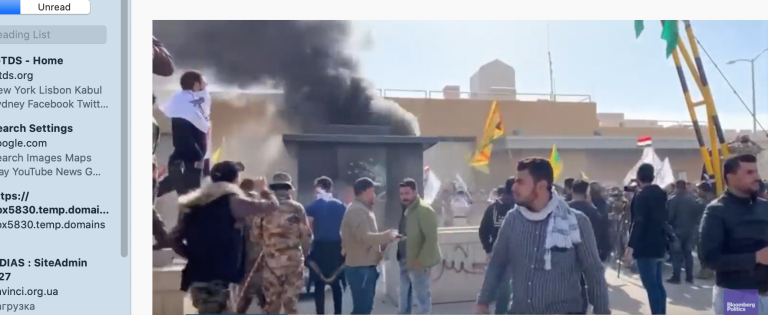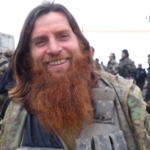The attack on the US Embassy in Iraq is indicative of Tehran’s hybrid operation involving foreign fighters. On December 31, nearly 10 passenger jets from Iran and several scheduled flights from Beirut and Damascus operated by Iranian and Syrian airlines landed at Baghdad International Airport. Iran has been actively “bringing” ideologically prepared forces to Iraq to exacerbate the situation around the US Embassy. The riots at the walls of the US Embassy in Baghdad were led by Abu Mahdi al-Muhandis, one of Hashd Shaabi leadersand the right-hand man of Qasem Soleimani, Islamic Revolutionary Guards Corps general and Quds commander.

The defence department said the militia had a “strong linkage” with Iran’s Quds Force, the overseas operations arm of the Islamic Revolution Guard Corps (IRGC), and had “repeatedly received lethal aid and other support from Iran”. Quds Force is responsible for extraterritorial military and underground operations).
Protests at US Embassy in Baghdad seem to be inconsistent and operated by several management centers. This is indicated by the fact that less radical supporters of the Hasd al-Shaab group have left the territory near the US Embassy in Baghdad. Hashd al-Shaab, the pro-Iranian militia leaders have issued a statement demanding that all its supporters immediately leave the US embassy in Baghdad, following the orders of the Iraqi prime minister. But the radicals, including Kata’ib Hezbollah (KH), insist on continuing unrest. KH is a Quds affiliate with Qasem Soleimani, responsible for attacking an American base in Kirkuk, killing one US contractor.
Pro-Iranian forces’ protests in Baghdad show evidence for a hybrid operation being prepared against the United States in Iraq. There are indications that the attack on the US Embassy was coordinated with the office of Iraqi Prime Minister Abdul-Mahdi. In particular, Iraqi government troops have let the “protesters” into the “Green Zone” – and it’s one of such indications.
Kataib Hezbollah, Harakat Hezbollah al-Nujaba, and potentially the Badr Organization.” Are the largest three Iranian proxy militias in the Paramilitary Mobilization Units (pmu). According to the Iraqi Executive Order 91, enacted by former Prime Minister Haider al-Abadi in 2016, made pmu militias a state organization.
The use of the Popular Mobilization Forces (PMF, Hashd al-Sha’abi in Arabic), raised in 2014 by a combination of executive orders and religious fatwa, is merely the latest example of this trend. Within the PMF—forming its core, in fact—are older pro-Iranian militias that were previously labeled “Special Groups”.
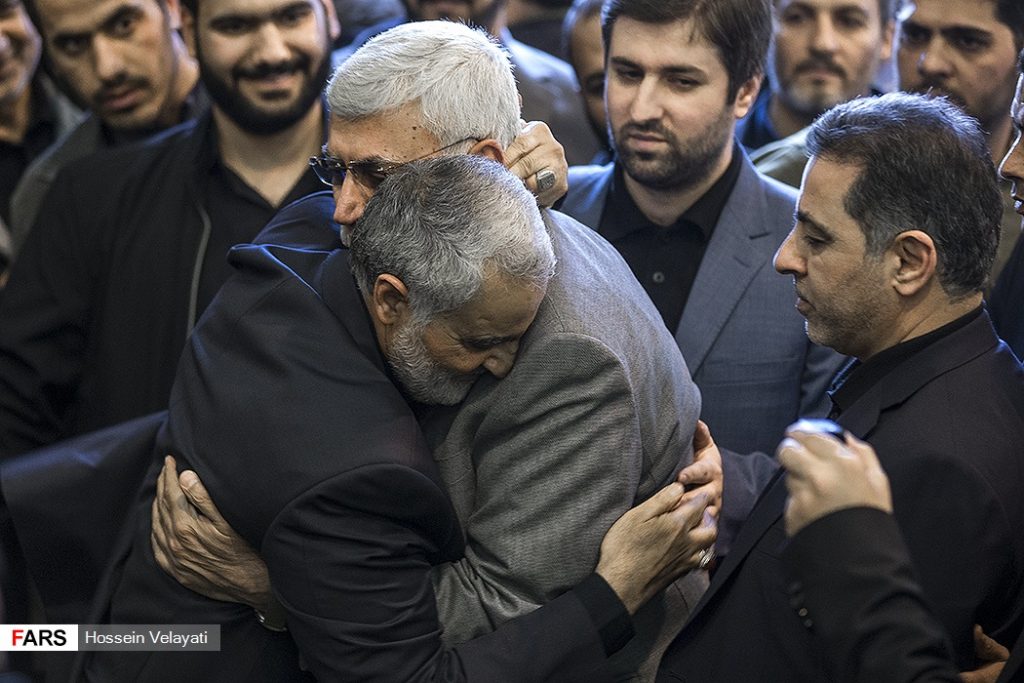
The purpose of the attack is to initiate the withdrawal of US troops from Iraq at the government level.
The visual staging of the attack has a lot to do with US Embassy seizure in Tehran in 1979, and is obviously symbolic. However, analysis of video footage and protesters’ behavior indicates that the attack on the embassy was not spontaneous, and the performers were subject to certain restrictions, supposed to create a “picture”, but not to allow the situation get out of hand and develop Benghazi-like scenario. Thus, the US Embassy attack in Baghdad cannot be considered as independent and self-sufficient action. It is part of a multi-step operation, covering both Iraq and Syria, given that the forces involved in the attack are operating in these countries.
IMINT analysis highlights the special details present in the protests at US Embassy:
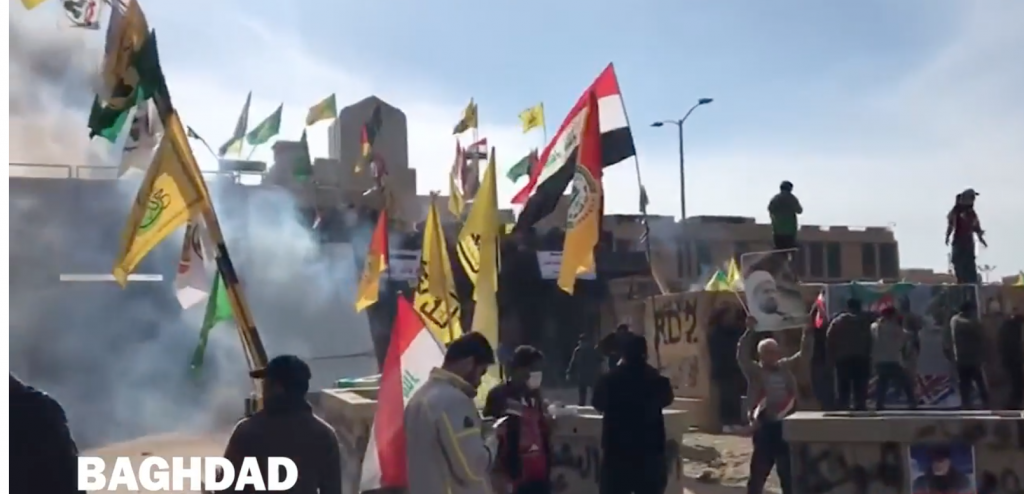
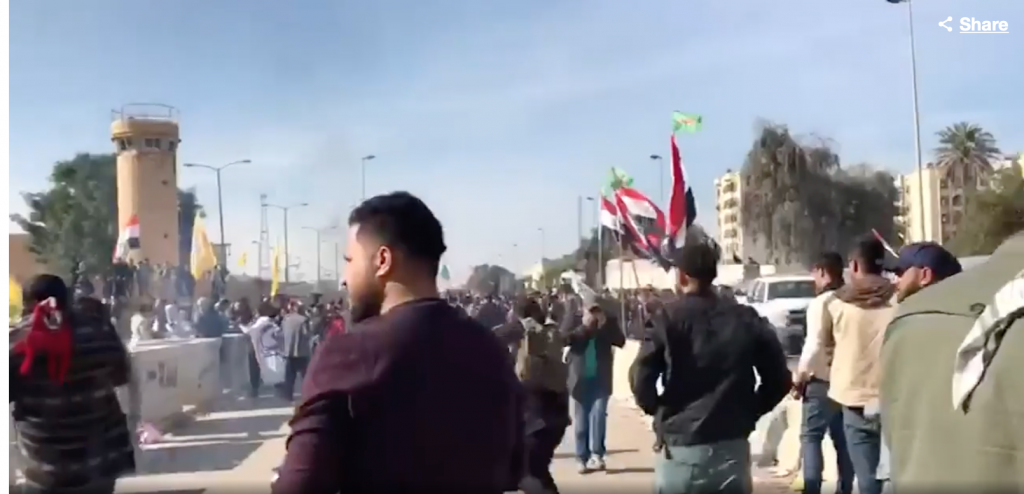
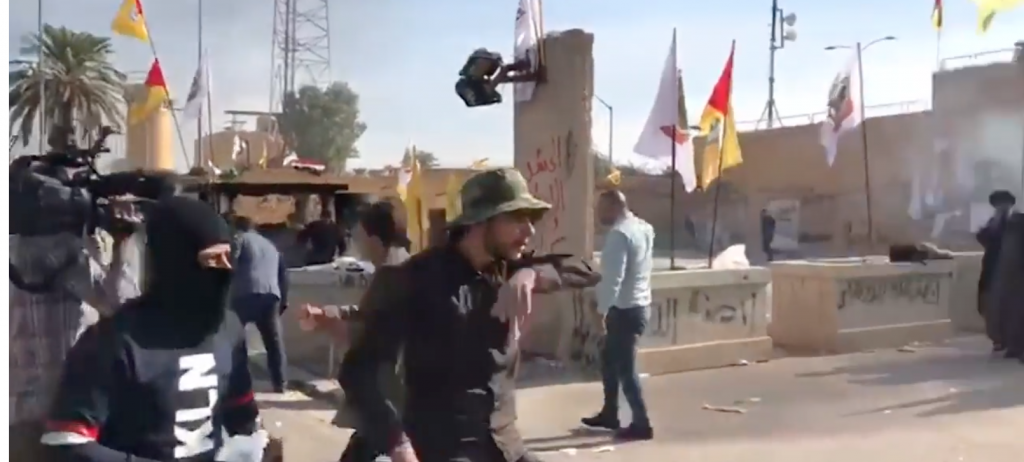
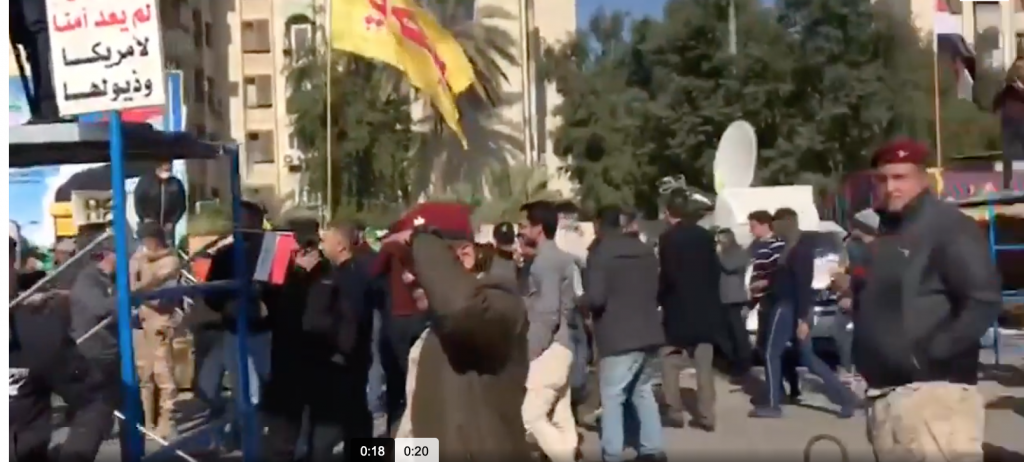
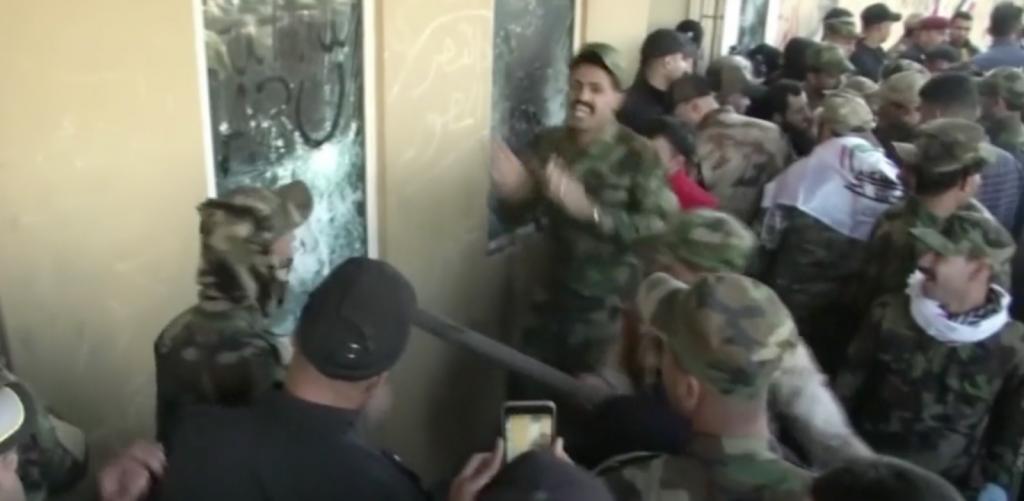
• Restraint and restriction of violence in protesters’ actions;
• The distribution of roles in the crowd and rather limited number of people taking part in the direct attack on the embassy;
• Passive behavior of some protesters, which emphasizes the lack of “personal motivation” to attack and perform a specific task;
• Demonstrative nature of actions. Up to 50% of participants focus on journalistic posing rather than active action, premises storming video shows.
The US Embassy in Baghdad was attacked on the eve of important historical dates, which may indicate the ideological and mobilizing component of this operation for pro-Iranian forces in Iraq. On January 16, 1979, Iranian Shah Mohammed Reza Pahlavi left Iran after the Islamic Revolution in Tehran, and on February 1 that year Ayatollah Khomeini returned to Tehran from a 14-year exile.
The desire to close a diplomatic corps in Baghdad is traced in Iranian actions in Baghdad.
On April 27, Iraqi prominent Shiite cleric Moqtada al-Sadr called for stopping dragging Iraq into U.S.-Iran conflict and suggested to close the U.S. embassy in Baghdad.
A statement by al-Sadr said that he is concerned about the “increase of interventions” in the Iraqi affairs that aimed at dragging Iraq into the U.S.-Iran conflict, and made 10 proposals including closing the U.S. embassy in Baghdad and withdrawing the Iraqi militias from the neighboring Syria.
Earlier, rocket attack on May 19 landed less than a mile from the United States Embassy in Baghdad’s well-fortified International Green Zone. No group immediately claimed responsibility for the attack, but Iraqi intelligence suspects the Shiite militias. Iraqi military spokesman Brig. Gen. Yahya Rasoul told the Associated Press that the rocket was believed to be fired from east Baghdad, home of the Iranian-backed Shiite militias. Shortly after the attack, Iraqi security forces discovered a Katyusha multiple-rocket launcher in east Baghdad. Тоді в операції ймовірно брали участь terrorist groups Kataib Hezbollah, Harakat Hezbollah al-Nujaba, and potentially the Badr Organization.” These three Iranian proxy militias are some of the largest in the Paramilitary Mobilization Units (pmu).
October 5, 2019 hardline daily newspaper Kayhan, affiliated with the office of Iranian Supreme Leader Ali Khamenei, has gone as far as calling for seizing the U.S. embassy in Baghdad.
Thus, the US Embassy in the Iranian paradigm looks like a symbolic source of US presence in Iraq. Over the past year, pro-Iranian forces have repeatedly focused on issues related to the closure of the US Embassy in Baghdad.
One likely scenario of the attack on December 30, 2019, could be to trigger an increase in US troops presence in the region, followed by the fighting of a large group of “protesters” with the US troops.
Iran’s ability to deploy militias to blockade American diplomats inside the embassy for most of two days made clear how much power they wield within the Iraqi government.
Part of the Shiite militia arriving from Damascus could be subordinate to
the ground troops for the Russian and Iranian efforts to prop up the Bashar al Assad regime under the Quds operational command.
There is no information yet on the link between the US Embassy attack in Baghdad and Russia. However, this connection needs to be deeply gone into, as it is known that Major General Qassem Soleimani’s visit to Moscow in 2015 was the first step in planning a Russian military intervention that had reshaped the Syrian war and forged a new Iranian-Russian alliance in support of Assad. There is nothing to suggest that Russia was involved in the operation, however, it cannot be ruled out that it knew about the preparation of the attack and could potentially assist with intelligence.
The recent Soleimani assassination in airstrike could be made with intel info given to Pentagon by Russia trying to hide its participation in Embassy attack and to set a crisis between the USA and Iran.
It is also known that in the 1970s, Abdul-Mahdi was a leading member of the Iraqi Communist Party, indicating that he had contacts with Russia, since all leading members of the Communist parties were in contact with the Soviet Committee for State Security (KGB).


